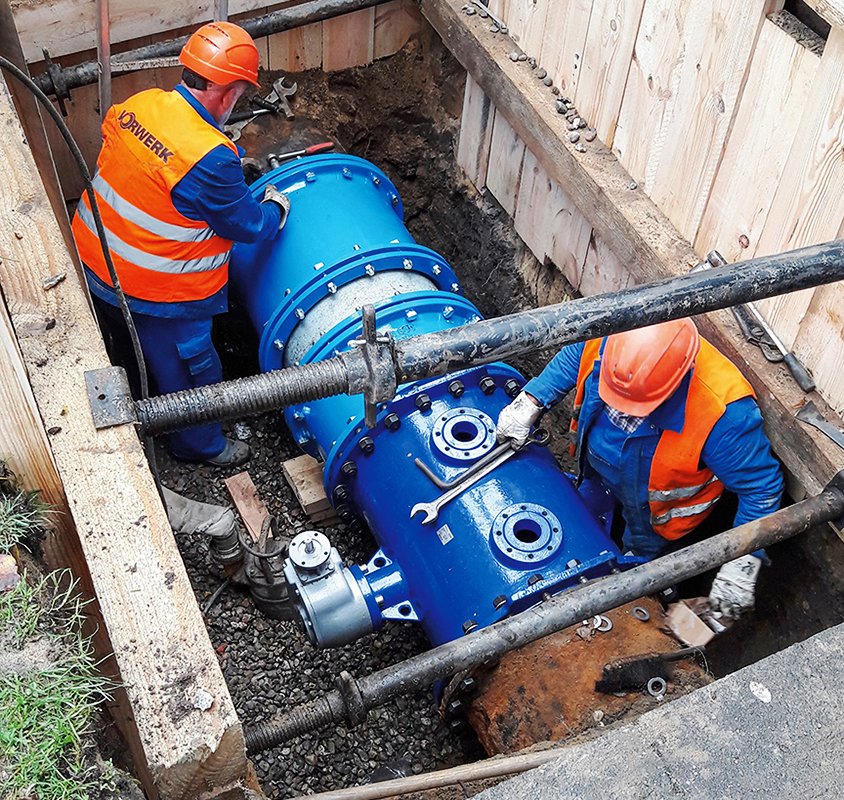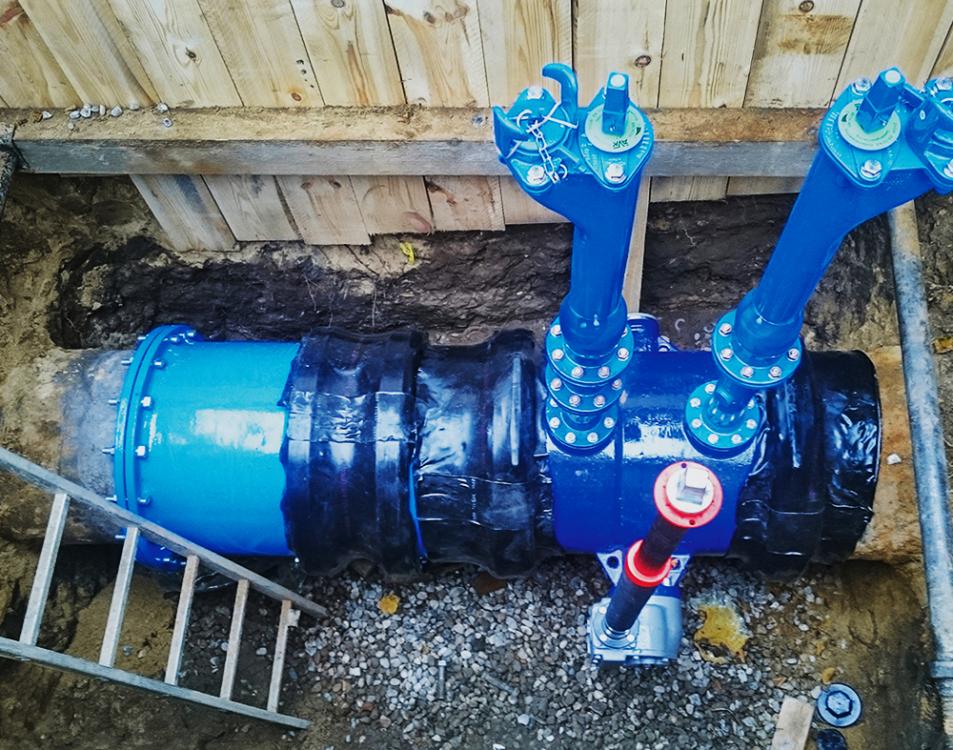Sonderlösung für Hamburg Wasser: Absperrklappe in langer Bauart mit Entlüftung
Frisches Trinkwasser für 2 Millionen Menschen
5.400 km Trinkwasser-Rohrnetz
Hamburg Wasser betreibt ein Trinkwasserrohrnetz mit einer Länge von rund 5.400 km. Etwa 900 km der Rohrleitungen haben eine Nennweite größer DN 300. Entsprechend groß ist die Anzahl der Absperrarmaturen, welche regelmäßig erneuert werden müssen. Im Zuge derartiger Baumaßnahmen gehört es mittlerweile zum Standard, Armaturen ab DN 400 mit einer absperrbaren Umführung auszustatten. Diese Umführungen ermöglichen eine druckstoßfreie Befüllung und Entleerung von Rohrleitungen. Ein weiterer Aspekt ist das Abführen von Luft während des Befüllvorganges (Entlüftung).
Bei einer Markt-Recherche nach doppelexzentrischen Absperrklappen wurden die Experten aus dem Netzbetrieb West auf die Klappen in langer Bauweise von Düker aufmerksam. Beim Ersatz alter Schieber ermöglichen diese häufig einen 1:1 Austausch.
Im Rahmen einer Besichtigung der Armaturenfertigung in Laufach wurde der Einsatz einer demnächst zu erneuernden Klappe DN 600 diskutiert. Weil sich die Klappe im Rohrnetz an einem Hochpunkt befindet, sollte bei der Baumaßnahme auch eine Einrichtung zur Entlüftung der Rohrleitung installiert werden.
Individuelle Sonderlösung
Die Diskussion ergab schließlich folgende Sonderlösung:
Eine Absperrklappe DN 600 für einen Nenndruck von 16 bar (PN 16) in langer Bauart (R 15) mit zwei oben liegenden Blockflanschen DN 80 zum Aufbau einer Entlüftung vor und hinter dem Gehäusesitz.
Die alte Absperrklappe wurde durch diese Sonderlösung ersetzt (Bild 1) und die Entlüftbarkeit durch den Einbau von zwei Unterflurhydranten vor und hinter der Absperrklappe sichergestellt (Bild 2).

Bild 1:
Aufsicht auf die Absperrklappe mit oben liegendem Blockflanschen

Bild 2:
Fertig installierte Absperrarmatur mit zwei Unterflurhydranten
Dieses kompakte System ermöglicht im Betrieb
- eine druckstoßfreie Befüllung und Entleerung der Rohrleitungen über eine Hydrantenbrücke.
- eine manuelle Be- und Entlüftung über die Standrohre.
- eine Entlüftung durch den Einsatz von Hydrantenentlüftern.
Erstveröffentlichung: Gerrit Kessler, Hamburg Wasser in „Wasserspiegel, 2017-05“, Düker GmbH
